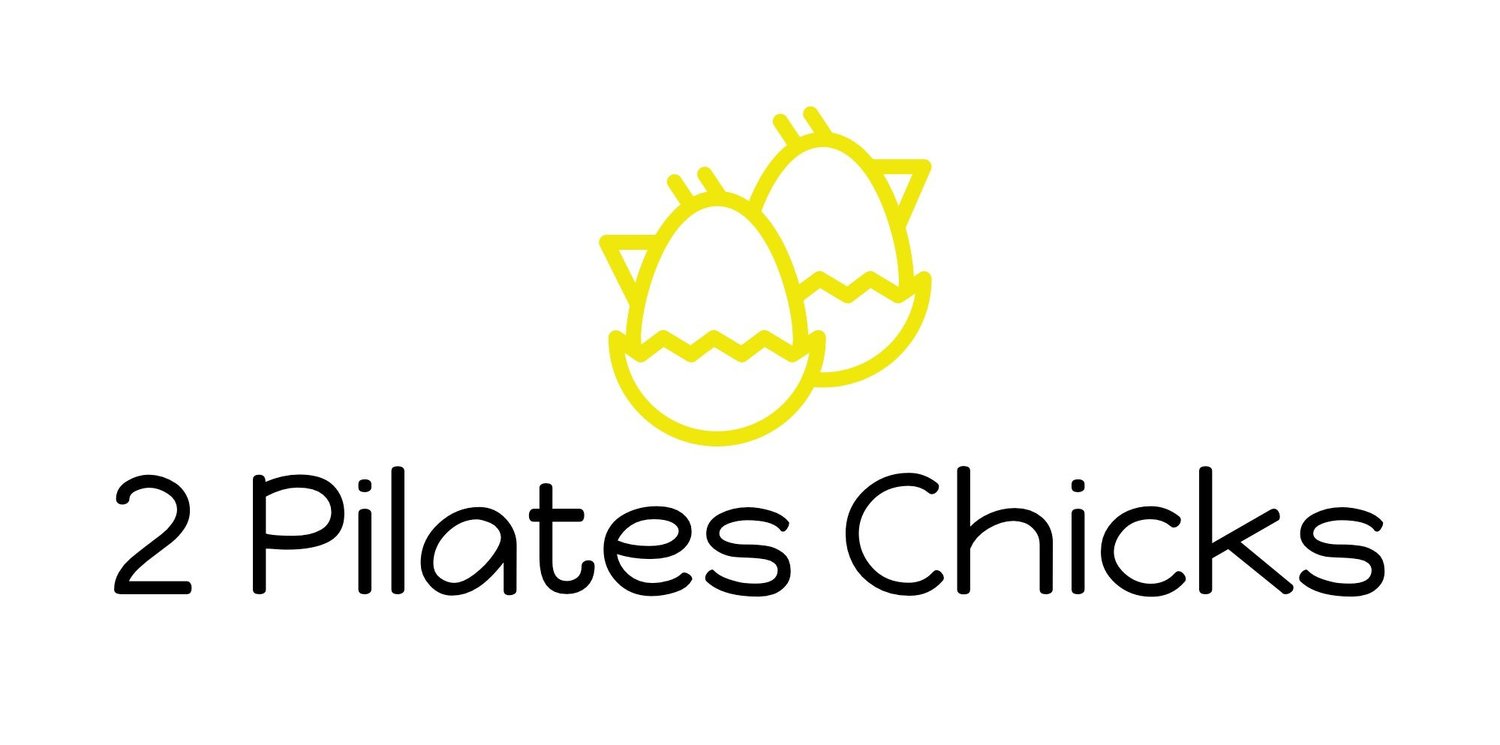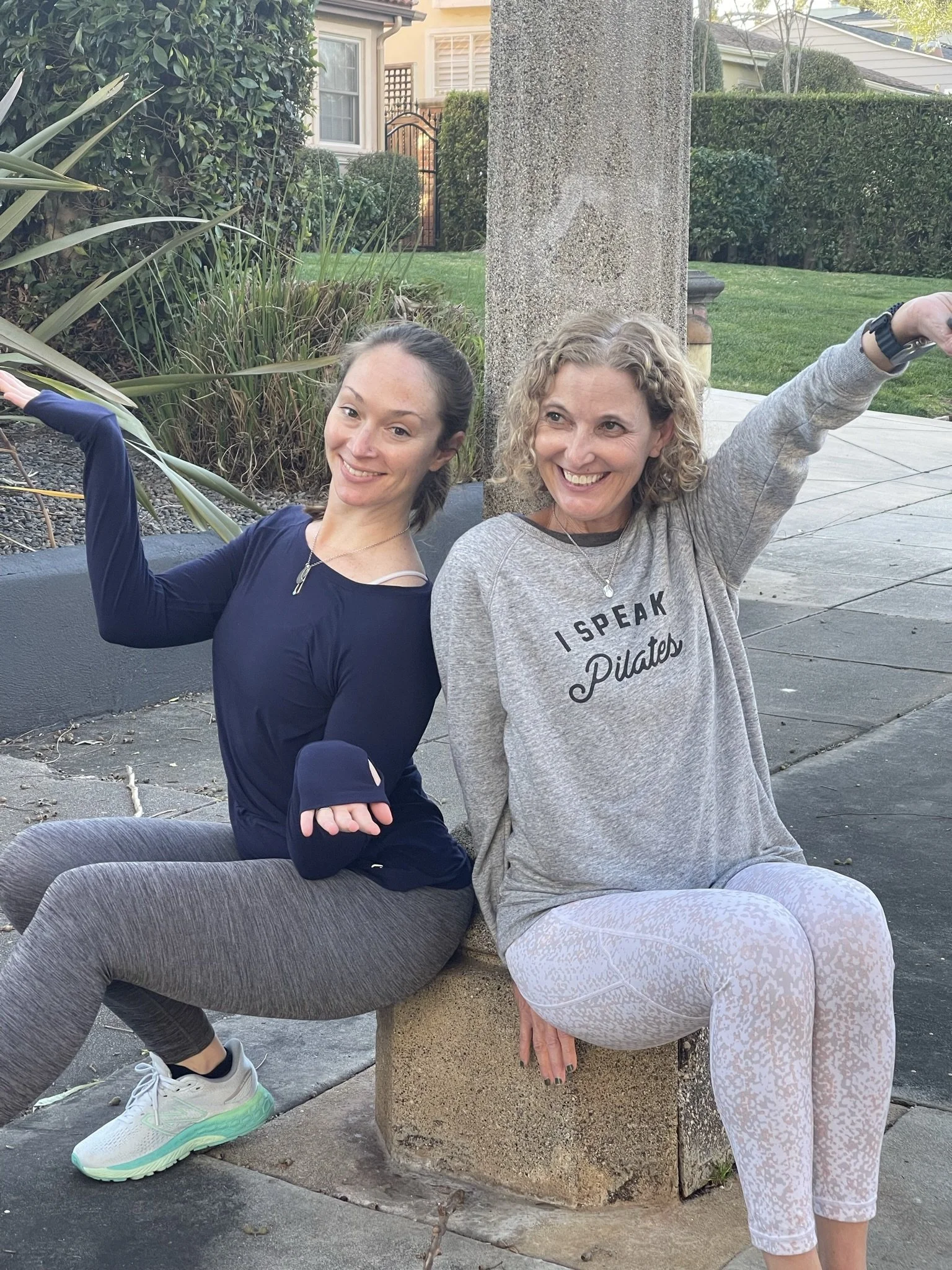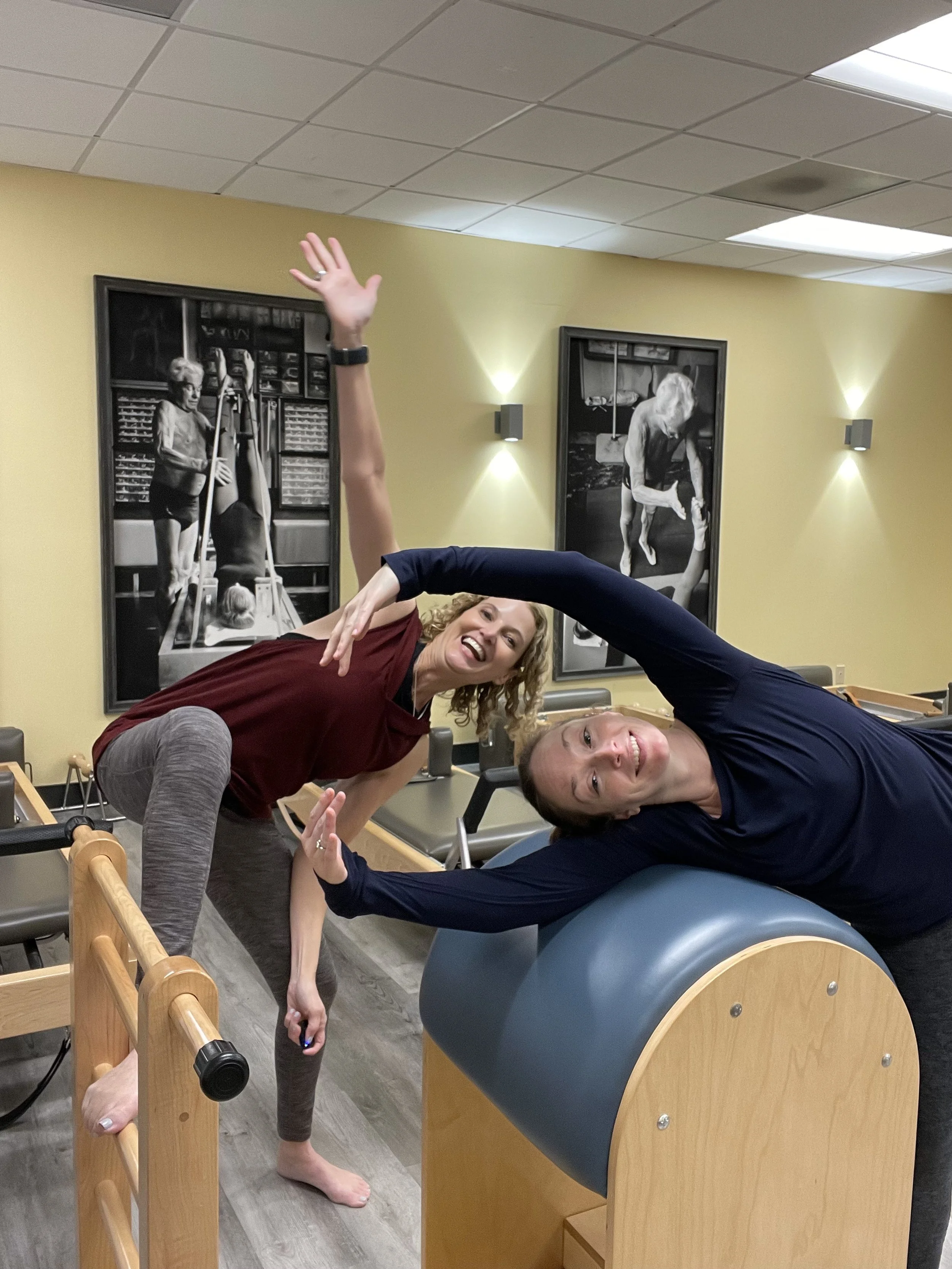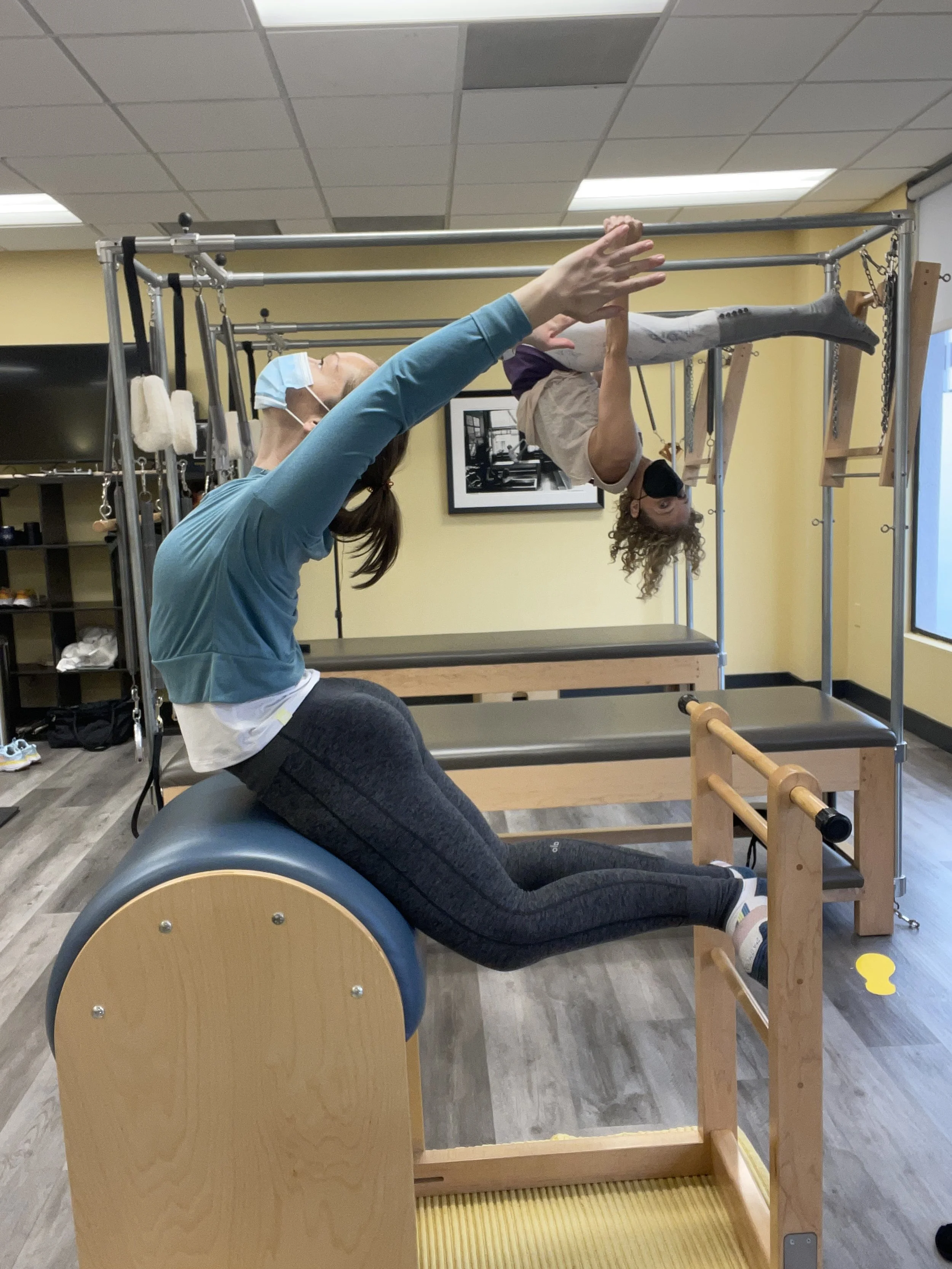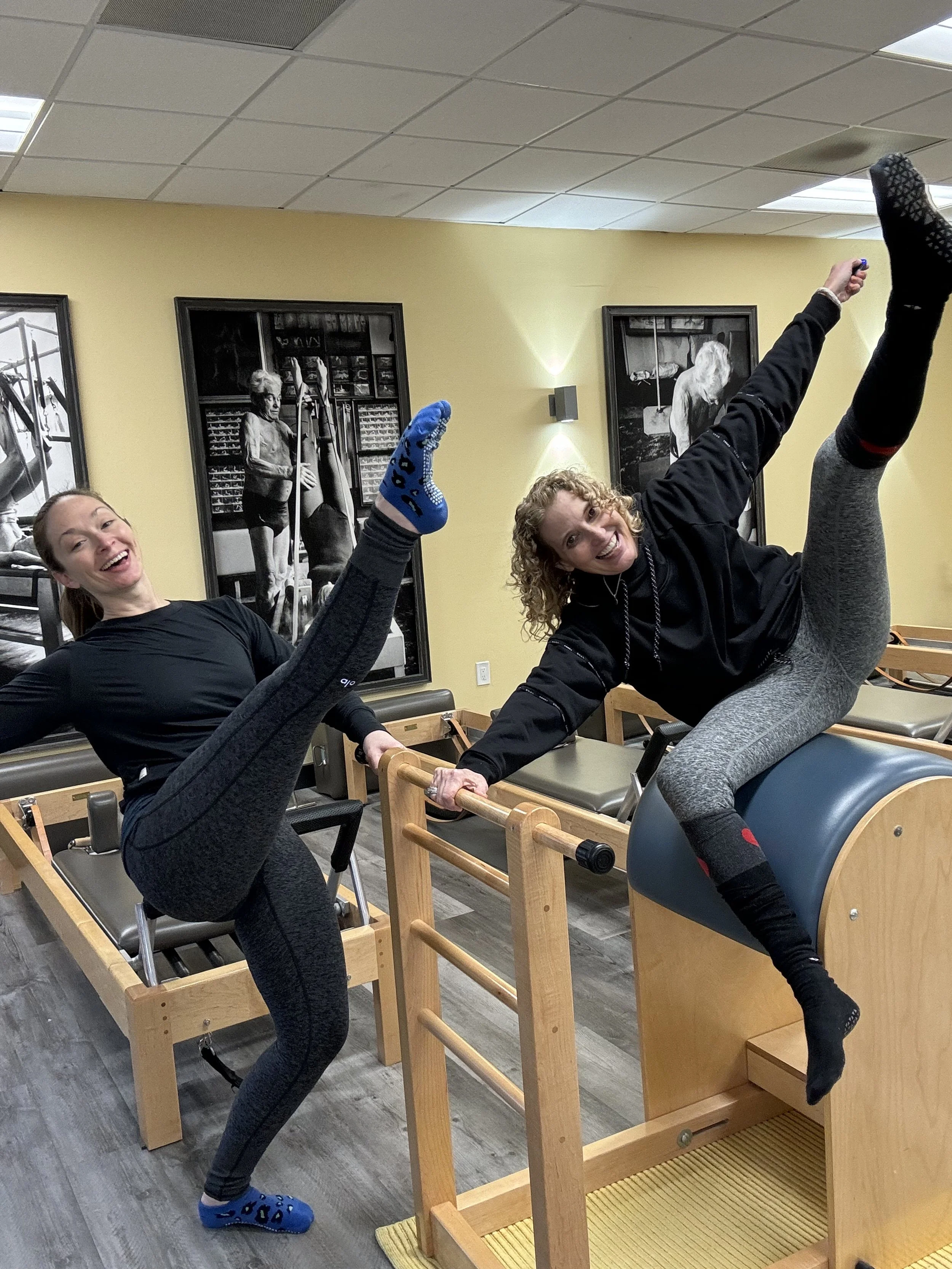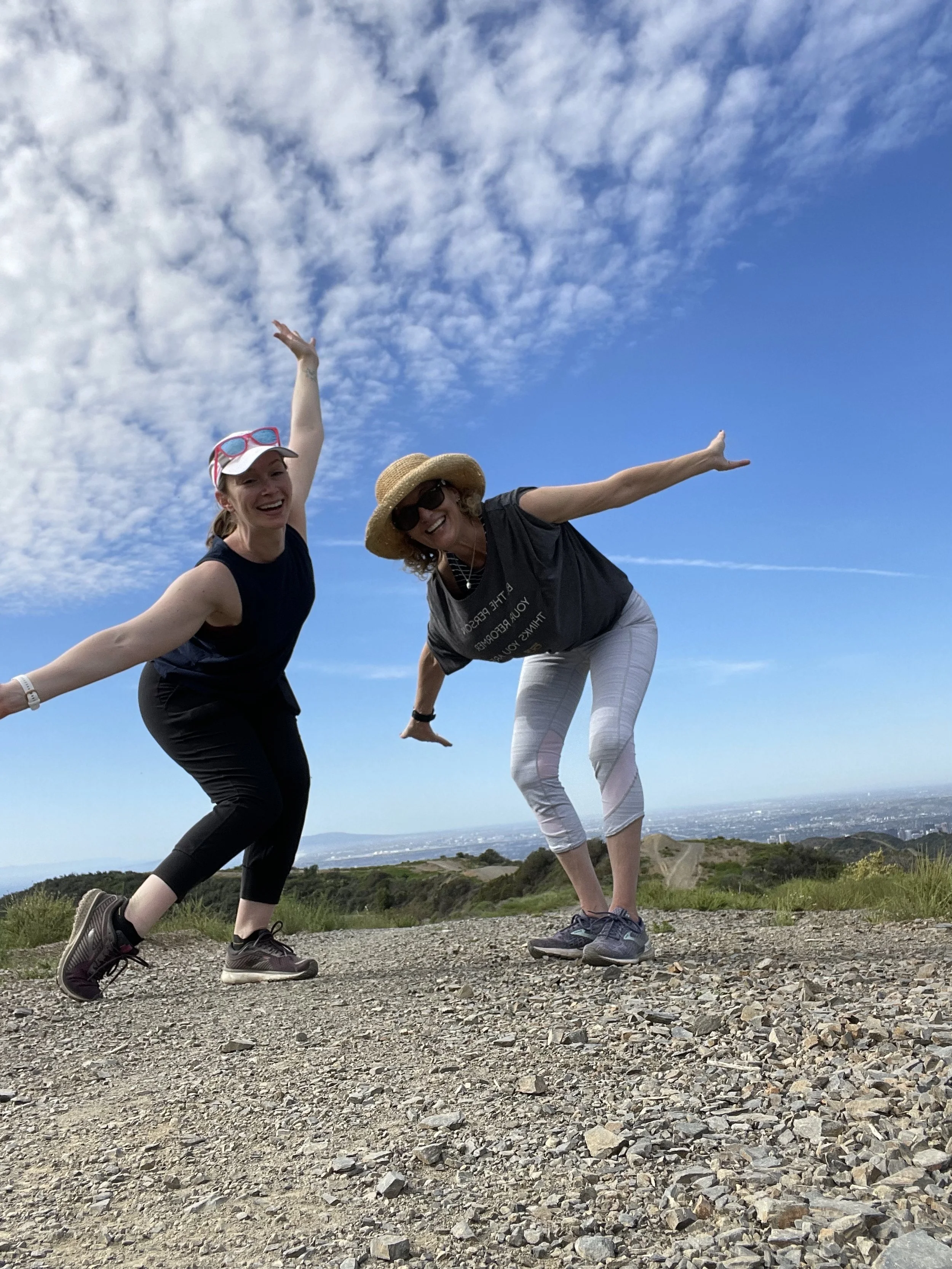Positive Cues are the key in Pilates
Did you know the brain doesn’t do negative? Do you wonder if your cues are helping or hurting the progression of your Pilates client?
The brain will focus on what you say as well as on what you say not to do.
In our podcast "Positive Cues are Key" we were thinking about a quote from the author and speaker Simon Sinek. His statement "the brain doesn't do negative" got us thinking about cueing in Pilates and how to direct verbiage while teaching . In this podcast, we discuss how when we are teaching Pilates it can be easy for terchers to use negative cues for clients to get them to do something you want or stop doing something that needs addressing. We often hear from teachers: “no, no" or “don’t let that hip move” or “stop moving this here”.
Sinek discusses how when we're skiing we won't be successful if we only think "don't hit the tree" while looking at all the trees to not hit. In order to move seamlessly through the path of trees we must look at the path we want to take instead of thinking of what not to do. We must look at the space through the trees where we do want to go in order to direct the mind to go there.
So, When we tell clients to not do something or not to move it stops more than just that one thing. It tells the brain only work on this, everything else is lost. That client has also stopped moving in a full body experience. It is now the brain telling that one part or one issue to NO, don’t!
As we thought about this more we realized if someone says to not think of an elephant the brain will only respond by thinking of an elephant and if we tell a child to not push a button the only thing they want to do is push a button. The brain responds to stimuli and thinks of things, we don't, not think of something.
So, when teaching Pilates, cueing a client by saying "no" or "don’t do that" will have the opposite effect.
By suggesting the brain can't comprehend negative cueing, we're not looking for fake positivity, but rather using positive cueing as a key to assisting clients' learning. There are basic types of cueing whether it's directed more intrinsically toward the client's body such as lengthening the arm, or extrinsic cues such as reaching for the door. Different people have different learning tendencies and respond better to different types of cueing. Depending on the client, exercise, or situation, different cues may be more effective than others.
Just like Sinek's great analogy of skiing and looking at the trees we want to avoid, the brain does not understand "don't do x" as a directive to help the body to do something. When we tell the client "don’t do that" the client is distracted from the full body connectivity and hyper-focused on what they're doing wrong. It is now the brain telling that one part or one issue to NO, don’t!
If the mind can't comprehend the negative and we tell a client "don't move the hips", they'll only be thinking about how their hips are moving but that directive doesn't help them figure out how to stop moving them.
Maybe they'll grip somewhere else in the body to try to still the movement a bit, and likely they'll feel that they're doing the exercise wrong and maybe they won't know how to fix the issue. They will even stop movement as the brain heard No and Don’t or Don’t move this.
If we ask the client to push into the opposite leg more, or reach the arms more, we're giving the client a positive cue, telling them what to do instead of what not to do. Here we're giving the client the keys to learning how to work toward stability in the hips. For this reason, we need to know what it is we're actually asking for and the various ways in which a client can achieve that. In the case of the wobbly hips, what we're really asking for is stability.
So we need to think about the ways in which we can get that stabilization where we need for them and what connection this client might be lacking to reduce the excess movement. If we truly know what we're asking for, then we can give the client the more specific, positive keys instead of saying "no" or "don't do x".
A lot of times saying "no, don’t" and having that negative verbiage to your client in their session is a lot like chastising or saying to the client they are wrong, bad and don’t know what they are doing. It makes them feel bad and not in a good, safe place as the studio should be. It can leave the client feeling as they head out of the Pilates studio that somehow they failed.
In Pilates, there's no end goal, yet we keep progressing and moving along. So, if they can't do something yet, let's see what they can do at this moment, and see where we can go from there. But if someone doesn't know how to do something that we're asking for, simply saying "no, don't do that" doesn't help guide them.
Taking that negative and turning it around into a positive action cue will not only let that brain focus on the full effect of the movement of the body but, also make the client feel empowered and safe, and that they did well in their Pilates session. That they can and are doing what we are asking them.
It is easy to go that route to critique and fix the client but, as teachers, our job is to inspire, guide and make them feel good and figure things out for themselves, and in those moments where negative cues are used all of that is impacted. The brain doesn’t hear the negative and so it stops the movement exploration and the client feels a sense of failure or something is wrong with their practice.
For teachers, notice how often we use "don't do x" as the cue, and how that can be changed into a positive action cue, and how that changes the client's response. People learn in all different ways and our job is to try to accommodate all these varied needs as best we can. We must always look at how people learn and how we can connect with them. We don't want our clients to feel afraid of being wrong or of making a mistake.
We do not want our client to feel like a scolded child while in our space. Overall, our goal in Pilates is to lift others up and for the client to feel better leaving the studio than when they came in.
Instead, cue the client in a positive and active way that keeps the brain moving that body and not letting anything stop.
Some good positive action cues may be:
1. Can you maybe bring that left hip a little more toward the wall in front of you?
2. Push into that left leg more and think of reaching your head even more to the sky
3. Are you working evenly in both legs? Can you feel pushing, and reaching with the same effort on each side?
Clients often think "I can't do that", and wonder if it's possible. As the teacher we want them to know that yes they can do this and it is possible. If the client thinks “I can’t do this” then they won’t be able to do it no matter what. The brain will go “ok, so we can’t do this why try because we can’t”.
There is a negative that the brain can’t comprehend how to make into a positive action. Similarly, those negative cues take the client to that place of “this will not happen”, when maybe by turning it around we can take them to a place where it actually does happen!
This begins with how we speak to the client and how we direct them throughout their session. We're teaching clients how to figure out the movement and what their body needs for themselves with the ultimate goal of the client not needing us for everything. By cueing the client with positive directions we're giving them the keys to be able to figure certain things out on their own later.
If we see the hip moving when we don't want it to, the teacher thinks about how I get them to find more stability, so we can cue them to push more into the opposite leg or press down through the arms. Then, later, if the client feels the wobbly hip again in their practice they then intrinsically know what they might need to do and can follow the positive cues we gave them previously.
Often, there are moments when a client adjusts a correction for themselves just before we cue them. They can feel what is off, and since they've been given the cues to figure out how to minimize the error they can adjust themselves. The practice then becomes their own, not just relying on the teacher.
As a teacher, it's always exciting to see a client make these corrections themselves, feeling where the body needs more reach, movement, or stability. Instead of the client feeling like they failed, they kept moving, they did what they could in a way that gave them positive feedback for their mind and body, and practice.
By teaching using positive cues we are giving our clients the keys to continue growing in their practice, learning how to find what works best for them, and helping them feel better walking out than when they first came into the studio that day.
